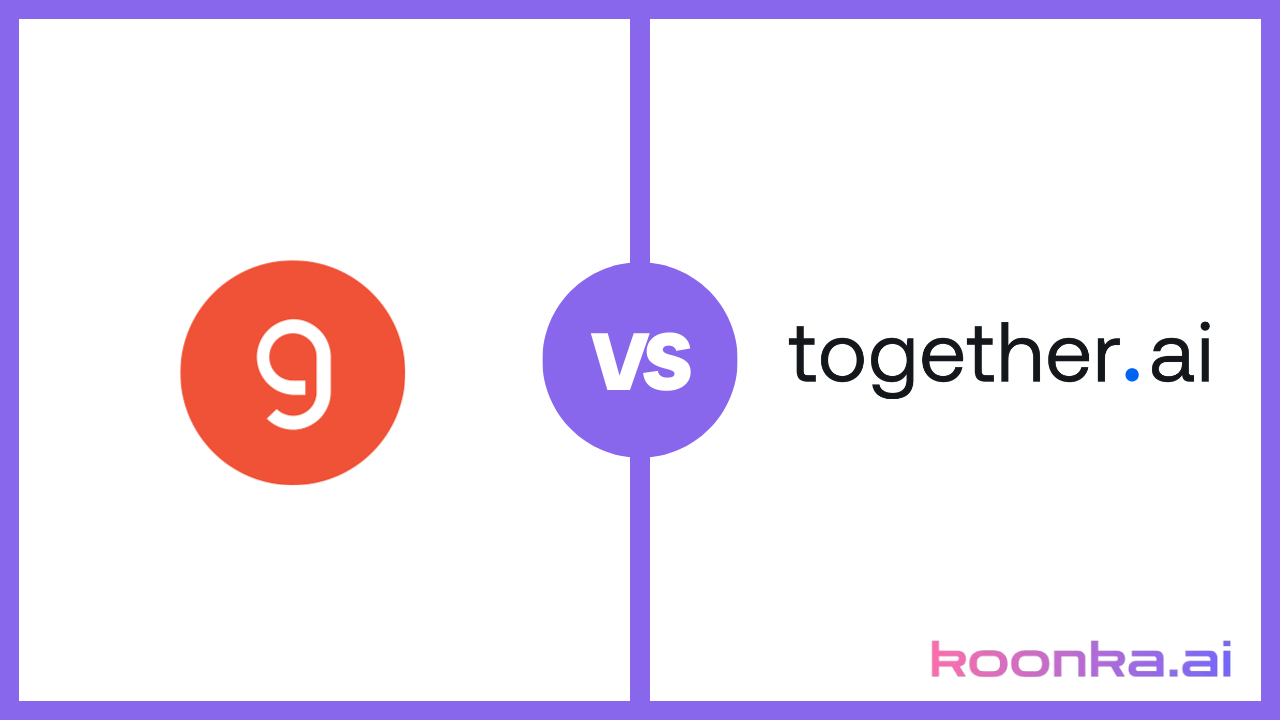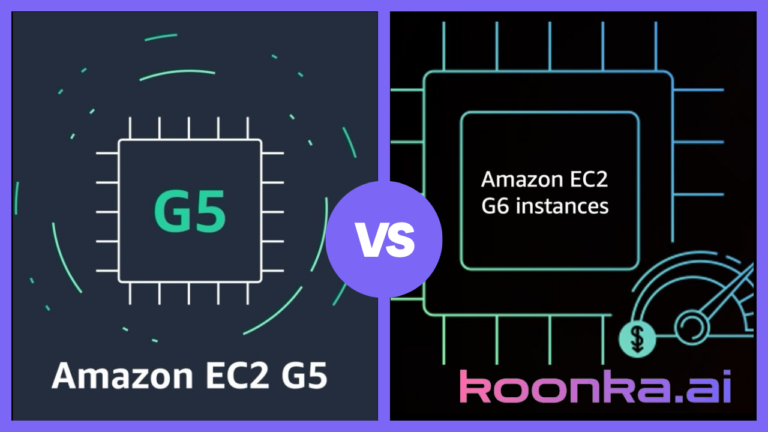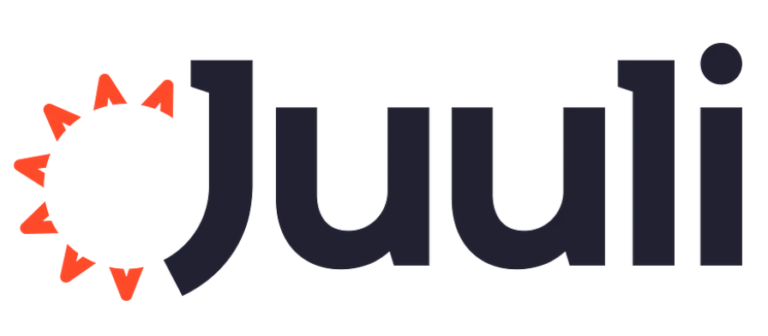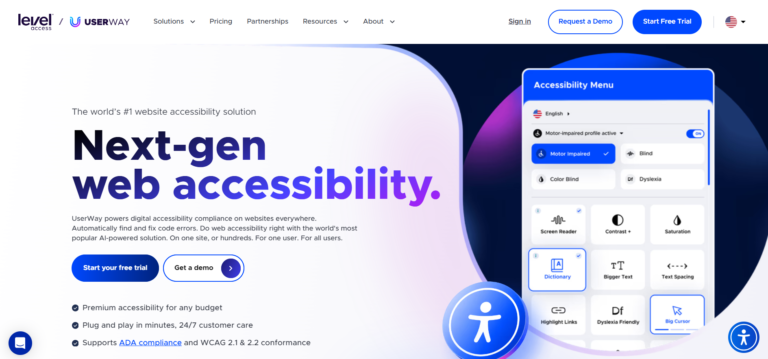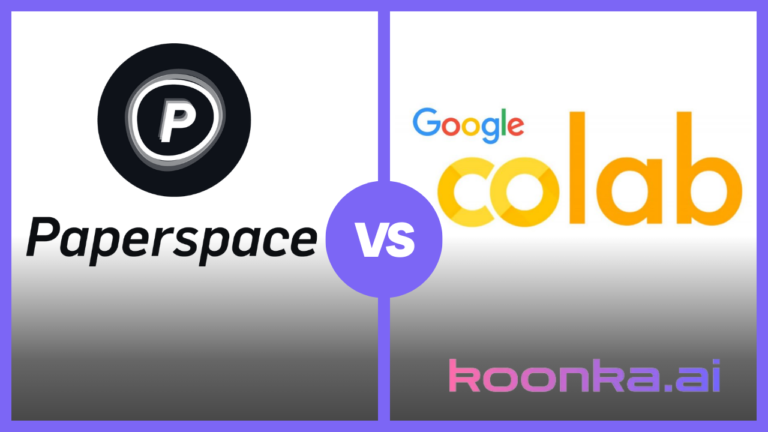Groq vs Together AI: A Deep Dive into Next-Gen AI Infrastructure
As AI applications get more complex and compute intensive, organizations have to choose between different infrastructure providers that can support rapid model development and deployment. Among the rising stars in the AI infrastructure landscape are Together AI and Groq. While both deliver best-in-class AI training and inference performance, they take fundamentally different approaches in hardware design, software optimization, and business strategy. Let’s dive deeper into the Groq vs Together AI comparison and find out which platform suits your needs.
Table of Contents
1. Hardware Architecture & Design
Together AI
Together AI builds its infrastructure on top of NVIDIA’s latest generation of GPU hardware, positioning itself at the forefront of general-purpose AI compute. At the core of its offering is the GB200 NVL72, a 72-GPU system that can deliver up to 1.4 exaFLOPS of AI performance, with 30TB of fast access memory and interconnected through high-speed NVLink and InfiniBand.
This sits on top of the B200, a Blackwell-architecture GPU that’s up to 15x faster for inference and 3x faster for training than the Hopper H100.
The H200 GPU takes performance to new heights with 141GB of HBM3e memory and 4.8TB/s of memory bandwidth, 40% more than the H100. Even legacy systems like the H100 and A100 are part of Together AI’s scalable infrastructure, supporting secure multi-tenancy, large model training, and inference.
The architecture is modular and rack scalable so it can adapt to any AI workload. Since Together AI is aligned with NVIDIA’s roadmap, it has broad compatibility with mainstream frameworks like PyTorch and JAX.
Groq
Groq takes a completely different approach, eschewing third-party GPU designs and building its own proprietary hardware. At the heart of its infrastructure is the GroqChip™, which powers its Language Processing Units (LPUs). These chips are designed from the ground up for deterministic, ultra-low latency performance, optimized for transformer inference.
Unlike GPUs, which rely on complex memory hierarchies, Groq’s architecture uses a single-core streaming compute model that eliminates bottlenecks and enables real-time computation. This allows Groq to achieve token generation latencies as low as a few milliseconds and up to 500x faster than traditional GPUs. It’s a vertical integration strategy that prioritizes specialized inference performance over general-purpose flexibility.
It’s about the philosophy: Together AI uses the scale and maturity of NVIDIA’s hardware to support the full model development lifecycle, from training to fine-tuning and deployment, while Groq has built an inference engine that rewrites the rules for real-time large language models.
2. AI Performance & Benchmarks
Together AI
Together AI has invested heavily in kernel-level optimisation and training efficiency and claims significant speedups and cost reductions across its infrastructure. It’s Together Kernel Collection (TKC) which is a suite of custom-tuned kernels for popular AI frameworks like PyTorch, reportedly gives a 24% average speedup compared to standard libraries like cuBLAS and cuDNN.
Together AI also includes FlashAttention-3 in its stack and gets up to 9x faster training and 75% cost reduction. For inference tasks it uses FP8-optimised kernels for small matrix operations and gets up to 75% faster inference compared to traditional precision formats. With over 100 exaFLOPS of training power across its NVIDIA-powered clusters, Together AI has massive scalability for training large models, instruction tuning, and multi-stage fine-tuning workflows.
Groq
Groq, on the other hand, focuses on inference performance and does so with a singular focus. Its custom-built Language Processing Units (LPUs) deliver deterministic, ultra-low latency inference — 70ms for GPT-3 175B and under 1ms for smaller LLMs.
This is not only fast but also stable, as Groq’s architecture eliminates the variability associated with dynamic token lengths and input prompts. In-context learning, multi-query batching, and parallel request processing happen with near-zero jitter.
The system also has no warm-up delays as its single-core streaming compute design means inference starts immediately with no latency spikes during ramp-up. In benchmarking scenarios, Groq outperforms even top-tier GPUs like NVIDIA’s H100 with reported inference latency improvements of 10-50x depending on the model and prompt complexity.
Groq is the clear leader for ultra-fast, real-time inference at scale and is ideal for latency-critical applications. Together AI is the leader for end-to-end model development with unmatched training performance, flexible fine-tuning, and full-stack support for enterprise-grade AI lifecycle management.
3. Software Ecosystem
Together AI
Together AI has built a full software ecosystem to accelerate AI workflows across training and inference. At the heart of this is the Together Kernel Collection (TKC), which optimizes widely used model architectures like LLaMA, Mixtral, and Mistral. They also have tools like DSIR and DoReMi to streamline dataset selection and model optimization during instruction tuning. The platform is fully compatible with industry-standard machine learning frameworks like PyTorch, JAX, and Hugging Face Transformers, so you can seamlessly integrate, experiment, and deploy AI models. Fine-tuning, quantization, and benchmarking are supported on both public and private datasets, so you have the flexibility to customize workflows to meet performance and privacy requirements.
Groq
Groq’s software is designed to be lean and optimized for its purpose-specific hardware. The GroqWare SDK allows you to convert and deploy models by statically compiling models into Groq formats. While this gives you deterministic performance and control over the execution pipeline, it limits the ability to modify model architectures, insert custom ops, or dynamically experiment. Currently, Groq’s support for mainstream ML frameworks like PyTorch or TensorFlow is still evolving, which may pose challenges for teams used to the flexibility of those ecosystems.
Together AI is a more flexible and familiar development environment that matches modern open-source ML workflows. Groq sacrifices software flexibility for hardware-level optimization and targets users who prioritize performance predictability over development versatility.
4. Inference & Training Efficiency
Together AI
Together AI is built for high performance across the full AI lifecycle, with speed, flexibility, and cost efficiency. It supports both training and inference at scale, so you can iterate quickly on natural language processing models without compromising quality. One of its key strengths is handling large context lengths thanks to advanced memory bandwidth and capacity, especially in H200-powered clusters.
This is critical for new generation models that require more memory per token and longer prompt windows. FlashAttention-3 integration, combined with proprietary data filtering tools like DSIR and DoReMi, accelerates model convergence and reduces computational waste. These innovations not only shorten training cycles but also optimize inference, making the platform a better alternative to others like GCP, AWS, or Azure AI, especially when looking at performance per dollar in real-world use.
Together AI’s infrastructure is designed to scale across data centers with dynamic GPU allocation, so you can fine-tune models or run massive inference workloads on reserved clusters. This gives you a good balance between performance and control, especially for enterprises running production-grade models.
The platform has a robust API and support for standard ML frameworks, so you can plug into pipelines that would otherwise require deep integration with a provider’s documentation or proprietary SDKs. You can fine-tune new models, run benchmarks, and deploy at scale without having to rearchitect your workflow, unlike most providers, where flexibility and hardware availability are a major bottleneck.
Groq
Groq is focused on inference, but does it in a highly optimized way that pushes the limits of real-time response. It eliminates warm-up times and has deterministic latency even on complex transformer-based tasks. Groq does not support training, but its LPUs can generate tokens at speeds that far outperform even the best GPUs, including those from others.
This makes it perfect for applications that need ultra-low latency and consistent throughput, like live chat systems, AI agents, or embedded NLP devices. For users with fixed model architectures and high query volumes, Groq has a unique performance advantage.
Together AI is for those who want full AI infrastructure with cost efficiency, long context length,s and flexible deployment across training and inference. Groq is for inference only, where speed is the only priority. Each has its own value proposition, but Together AI wins on full model lifecycle with a great developer experience and better pricing than most others.
5. Pricing
| Category | Together AI | Groq |
|---|---|---|
| LLM Token Pricing (per 1M) | 3B: $0.06; 70B: $0.54–$0.90; DeepSeek R1: $2–$7 | LLaMA 3 8B: $0.05 in / $0.08 out; 70B: $0.59 / $0.79 |
| GPU Access (on-demand) | A100: $1.30/hr; H100: $1.75/hr; H200: $2.09+/hr | N/A — inference only via GroqCloud LPUs |
| Dedicated Endpoints | $1.30–$4.99/hr (based on GPU tier) | LPU-backed instances with negotiated enterprise terms |
| Fine-Tuning Support | Yes — starts around $366 for 1B tokens | No training support |
| TTS / ASR Pricing | TTS: $65 per 1M chars; ASR: not listed | TTS: $50 per 1M chars; ASR: $0.02–$0.111 per hour |
| Batch Processing | Not specified | 50% discount through April 2025 for paid users |
| Pricing Transparency | Detailed and public | Now public, still expanding |
Together AI
Together AI has tiered pricing for individual developers, startups and enterprise scale. The Build tier has generous free access, up to 6,000 requests per minute and 2 million tokens per minute. The Scale tier adds production-grade limits, premium support, and discounts on reserved GPUs. At the Enterprise level, Together offers custom deployments, dedicated support, HIPAA compliance, and a 99.9% SLA with geo-redundancy.
Inference pricing varies by model size and type. LLaMA models start at $0.06 per million tokens for 3B and go up to $0.90 for 70 B. Vision models cost more, $1.20 for 90B and $3.50 for 405B LLaMA. DeepSeek models range from $0.90 to $3 input / $7 output. Qwen and Mixture-of-Experts models range between $0.30 and $2.40, depending on parameters.
Dedicated GPU endpoints are available on demand, starting at $1.30/hr for A100s and going up to $4.99/hr for H200s. GPU cluster access (including GB200 and B200) is custom-priced. Fine-tuning starts at $366 for 1B tokens at 1 epoch, with deliverables including model checkpoints and final weights.
Groq
Groq now offers transparent on-demand Tokens-as-a-Service pricing, powering major open-source LLMs. Pricing is split by input and output tokens per million. For example, LLaMA 3 8B is $0.05 input and $0.08 output, blazing fast 1,200 tokens per second. 70B is $0.59 input and $0.79 output. Other supported models include Qwen QwQ, DeepSeek R1, Mistral Saba, Gemma 2, all priced competitively across size and context length.
Groq also offers Text-to-Speech at $50 per million characters and Speech Recognition from $0.02 to $0.111 per hour, depending on model tier. The Batch API supports large-scale inference workloads with up to 50% off for GroqCloud customers until April 2025.Transparent pricing.
Together AI offers end-to-end AI lifecycle pricing with extensive transparency across training, inference, and infrastructure use. Groq is now highly competitive on inference token pricing and performance, with a focus on ultra-low latency LLM delivery and batch processing efficiency.
6. Developer & Enterprise Experience
Together AI
Together AI is designed to serve developers and organizations at every level, from solo builders to enterprise teams. The platform has a clear three-tier pricing model — Build, Scale, and Enterprise — to match performance and support needs. Developers can chat with Together AI in-app, via email, or dedicated Slack channels for fast support.
Advanced dashboards are available for real-time monitoring, usage tracking, and cost control. For enterprises that require strict data controls, Together AI offers HIPAA-compliant environments, private VPC deployments, and multi-region hosting. Teams can also opt for fine-tuning and consulting services to simplify model deployment.
Groq
Groq positions itself as a high-touch partner for enterprise clients. It emphasizes direct engagement with solution engineers to guide clients through model compilation, infrastructure setup, and throughput optimization.
Enterprise engagements have strong SLAs for latency, uptime, and compliance. Groq’s focus on industries like finance, healthcare, and defense is reflected in its robust security and regulatory adherence. Together AI supports more self-service scalability, while Groq prefers curated enterprise deployment models with hands-on integration and support.
7. Ideal Use Cases
Together AI
Together AI is better for teams that need large model training, on-demand fine-tuning or building advanced multimodal systems that combine vision and language. Its GPU clusters also support long-context retrieval-augmented generation (RAG) workflows where extended context lengths and dynamic token windows are required.
Groq
Groq is ultra-fast and deterministic. Its platform is optimized for sub-100ms response times, making it ideal for real-time applications in regulated industries. Groq’s architecture also supports highly power-efficient token generation, making it suitable for edge environments or latency-sensitive deployments with throughput guarantees. Enterprises that require strict SLAs, stable performance at scale, and direct support for mission-critical inference workloads will find Groq’s platform a perfect fit.
| Use Case | Best Platform |
|---|---|
| Large-scale model training | Together AI |
| Vision + Text multimodal models | Together AI |
| Real-time LLM inference (sub-100ms latency) | Groq |
| Power-efficient token generation at edge | Groq |
| On-demand model fine-tuning | Together AI |
| Long-context retrieval-augmented generation (RAG) | Together AI |
| Enterprise inference with strict latency SLAs | Groq |
Groq vs Together AI: The Bottom Line
Together AI and Groq are two different approaches to AI infrastructure. Together AI leads in end-to-end support for model development, training, and tuning, giving developers and enterprises control over performance, cost, and scale. It’s best for those building and iterating on new models or deploying advanced multimodal capabilities.
Groq is designed for inference. Its streaming LPU architecture delivers the most tokens per second and consistency for enterprise applications where latency and power efficiency matter. Whether for conversational AI, automated decision systems, or inference at the edge, Groq sets a new bar for high-performance delivery.
In practice, the most forward-thinking teams will find that a hybrid approach delivers the best of both worlds: train and optimize models on Together AI’s flexible GPU infrastructure, then deploy inference-critical components on Groq’s ultra-low latency platform.
As the industry evolves, this GPU vs LPU paradigm will define how teams balance flexibility, speed, and specialization. Today, both Together AI and Groq are shaping the future of AI — not by competing on the same ground, but by expanding what’s possible at both ends of the pipeline.

